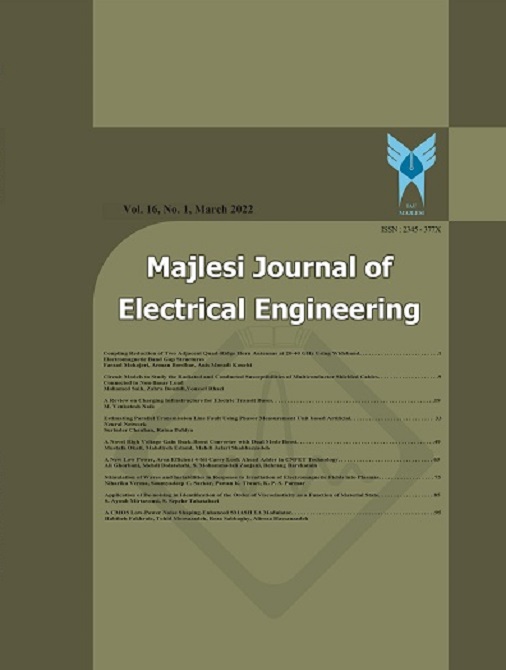[1] M. A. Mahjoub, M. Mbarki, Y. Serrestou, L. Kerkeni, and K. Raoof, “Speech Emotion Recognition: Methods and Cases Study,” Vol. 2, Icaart, pp. 175–182, 2018.
[2] Po-Yuan Shih and Chia-Ping Chen, “Speech Emotion Recognition with Skew-Robust Neural Networks”, Computer Science and Engineering Kaohsiung, Taiwan ROC Academia Sinica Institute of Information Science, pp. 2751–2755, 2017.
[3] Li Zheng; Qiao Li; Hua Ban and Shuhua Liu, “Speech emotion recognition based on convolution neural network combined with random forest”, 2018 Chinese Control And Decision Conference (CCDC), 2018..
[4] Lin Yilin and Wei Gang, "Speech Emotion Recognition Based on HMM and SVM", Proc of the 4th International Conference on Machine Learning and Cybernetics, Vol. VIII, pp. 4898-4901, 2005.
[5] W Lim, D Jang and T. Lee, "Speech emotion recognition using convolutional and Recurrent Neural Networks[C]", Signal and Information Processing Association Annual Summit and Conference (APSIPA) 2016 Asia-Pacific, pp. 1-4, 2016.
[6] M. Fayek, M. Lech, and L. Cavedon, “Evaluating deep learning architectures for Speech Emotion Recognition,” Neural Networks, Vol. 92, pp. 60–68, 2017.
[7] J. Engelbart, “A Real-Time Convolutional Approach To Speech Emotion Recognition,” July, 2018.
[8] Y. Niu, D. Zou, Y. Niu, Z. He, and H. Tan, “A breakthrough in Speech emotion recognition using Deep Retinal Convolution Neural Networks,” pp. 1–7.
[9] J. Zhao, X. Mao, and L. Chen, “Speech emotion recognition using deep 1D & 2D CNN LSTM networks,'' Biomed. Signal Process. Control, Vol. 47, pp. 312_323, Jan
[10] C. Z. Seyedmahdad Mirsamadi, Emad Barsoum, “Automatic Speech Emotion Recognition Using Recurrent Neural Networks With Local Attention Center for Robust Speech Systems , The University of Texas at Dallas , Richardson , TX 75080 , USA Microsoft Research , One Microsoft Way , Redmond , WA 98052 , USA,” ICASSP 2017, Proc. 42nd IEEE Int. Conf. Acoust. Speech, Signal Process., pp. 2227–2231, 2017.
[11] P. Tzirakis, J. Zhang, and W. Schuller, “END-TO-END SPEECH EMOTION RECOGNITION USING DEEP NEURAL NETWORKS”, Department of Computing , Imperial College London , London , UK Chair of Embedded Intelligence for Health Care and Wellbeing , University of Augsburg , Germany, Icassp 2018, pp. 5089–5093, 2018.
[12] J. A. Russell, “A Circumplex Model of Affect,” December 1980, 2016.
[13] T. A. Burns, “The Nature of Emotions,” Int. J. Philos. Stud., Vol. 27, No. 1, pp. 103–106, 2019.
[14] Lin Yilin and Wei Gang, "Speech Emotion Recognition Based on HMM and SVM", Proc of the 4th International Conference on Machine Learning and Cybernetics, Vol. VIII, pp. 4898-4901, 2005.
[15] M. Fayek, M. Lech, and L. Cavedon, “Evaluating deep learning architectures for Speech Emotion Recognition,” Neural Networks, Vol. 92, pp. 60–68, 2017.
[16] J. Engelbart, “A Real-Time Convolutional Approach To Speech Emotion Recognition,” July, 2018.
[17] S. Demircan and H. Kahramanlı, “Feature Extraction from Speech Data for Emotion Recognition,” January, 2014.
[18] P. P. Singh and P. Rani, “An Approach to Extract Feature using MFCC,” Vol. 04, no. 08, pp. 21–25, 2014.
[19] S. Bhadra, U. Sharma, and A. Choudhury, “Study on Feature Extraction of Speech Emotion Recognition,” Vol. 4, No. 1, pp. 3–5, 2016.
[20] K. Han, D. Yu, and I. Tashev, “Speech Emotion Recognition Using Deep Neural Network and Extreme Learning Machine,” Fifteenth Annu. Conf. …, September, pp. 223–227, 2014.
[21] O. Ameena, “Speech Emotion Recognition Using Hmm, Gmm and Svm Models B.Sujatha (Me),” Int. J. Prof. Eng. Stud., Vol. VI, No. 3, pp. 311–318, 2016.
[22] Y. Sun, “Neural Networks for Emotion Classification,” Science (80-. )., Vol. 20, No. 9, pp. 886–899, 2011.
[23] B. Xu, N. Wang, and T. Chen, “Empirical evaluation of rectified activations in convolutional network,” arXiv preprint arXiv:1505.00853, 2015.
[24] M. A. . Tanner and W. H. Wong , “The Calculation of Posterior Distributions by Data Augmentation”, Journal of the American Statistical Association , Vol . 82 , No . 398 ( Jun ., 1987 ), pp. 528–540, 2009.
[25] N. Jaitly and G. E. Hinton, “Vocal Tract Length Perturbation (VTLP) improves speech recognition.”, Proceedings of the 30 th International Conference on Machine Learning, Atlanta, Georgia, USA, 2013.
[26] R. Y Rubinstein, D. P Kroese, “Imulation and the Monte Carlo Method”, 2nd edn. 2007 Wiley, New York.
[27] Y. Q. K. Y. J. Niu, "Acoustic emotion recognition using deep neural network," Acoustic emotion recognition using deep neural network, pp. pp. 128-132, 2014.
[28] X. Zhou, J. Guo, and R. Bie, “Deep Learning Based Affective Model for Speech Emotion Recognition,” pp. 841–846, 2016.
[29] R. R. Salakhutdinov and G. E. Hinton. “Deep Boltzmann machines”, In Proceedings of the International Conference on Artificial Intelligence and Statistics, Vol. 12, 2009.
[30] F. Liu, B. Liu, C. Sun, M. Liu, X. Wang, “Deep belief network-based approaches for link prediction in signed social networks”, Entropy 17 pp. 2140–2169, 2015.
[31] G.E. Hinton, S. Osindero, Y.W. Teh, “A fast learning algorithm for deep belief nets”, Neural Comput 18, pp. 1527–1554, 2006.
[32] Yoshua Bengio. “Learning deep architectures for AI. Foundations and Trends in Machine Learning”, Also published as a book. Now Publishers, Vol. 2(1),1pp. –127, 2009.
[33] P. Vincent , “Hugo Larochelle Stacked Denoising Autoencoders: Learning Useful Representations in a Deep Network with a Local Denoising Criterion”, Journal of Machine Learning Research Vol. 11, pp. 3371-3408,2010.
[34] M. F. Alghifari, T. S. Gunawan, and M. Kartiwi, “Speech emotion recognition using deep feedforward neural network,” Indones. J. Electr. Eng. Comput. Sci., Vol. 10, No. 2, pp. 554–561, 2018.
[35] X. Ke, Y. Zhu, L. Wen, and W. Zhang, “Speech Emotion Recognition Based on SVM and ANN,” Int. J. Mach. Learn. Comput., Vol. 8, No. 3, pp. 198–202, 2018.
[36] P. Tzirakis, J. Zhang, and W. Schuller, “End-To-End Speech Emotion Recognition Using Deep Neural Networks Department of Computing”, Imperial College London , London , UK Chair of Embedded Intelligence for Health Care and Wellbeing , University of Augsburg , Germany, Icassp 2018, pp. 5089–5093, 2018.

